Itinerary edited by UNIVERSITY OF TUSCIA 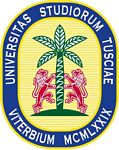

The Collections of Comparative Anatomy and Zoology and of Xylarium of the University of Tuscia have joint their forces to present an environment familiar to us and full of secrets and biodiversity, the woods. In In this itinerary will be showed the typical environment of the Tuscia's woods. The woods is a complex environment, stratified and inhabited by plants and animals, in which the dynamics of evolution of one and the other are strongly correlated.
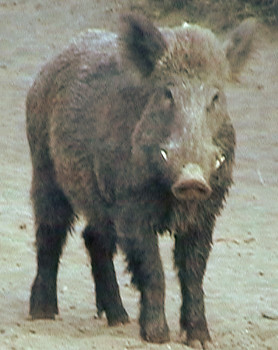
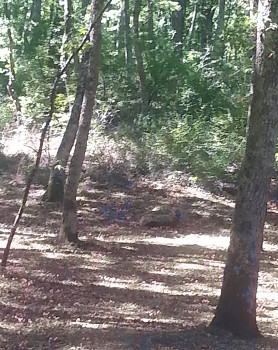
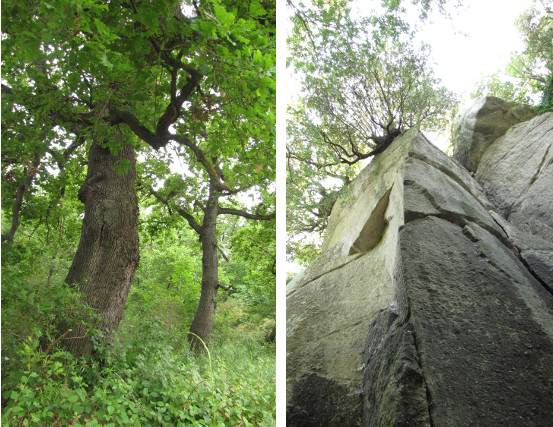 Foto 3 e 4 . Querceto e vegetazione rupestre (bagolari e lecci) a Corviano – Soriano nel Cimino
Foto 3 e 4 . Querceto e vegetazione rupestre (bagolari e lecci) a Corviano – Soriano nel Cimino  foto 5. faggeta – Soriano nel Cimino
foto 5. faggeta – Soriano nel Cimino 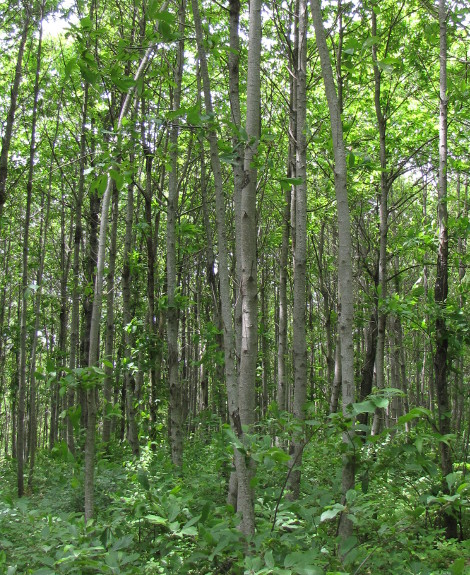 foto 6. ceduo di castagno – San Martino
foto 6. ceduo di castagno – San Martino
The forest: a network of ecosystem relationships
The distribution of tree species depends from many environmental factors, in particular the climate, the proximity to waterways and soil characteristics but also light conditions and slope exposure could have a key role , where the dynamics of competition between plants for the light represent a further factor. The last factor, but not less important is the human interaction with the wood habitat. In the underground environment we can find different biotic forms as plant roots, truffles and the lairs of some animals, such as mole-europeae and some soil insects (beetles Coleoptera-sp., Scorpions-Euscorpius sp., Spiders, grasshoppers -Caelifera sp., butterflies-of Lepidottera larvae sp ..).
On the ground next to the growing fungi, mosses and many herbs characterized by beautiful and noticeable flowering. In the undergrowth are been observe small shrubs, ferns but also the renewal of the trees and plants dominated and decay. It can be found in daytime behavior near water sources the amphibians’ toad Bufo bufo, lizards Podarcis-muralis-snakes like Natrix natrix .
The relationship with the fauna is at times contradictory and in alternation. It is true that some animal species derive their livelihood from the forest and found in it their refuge; it is equally true that some of then irreversibly damage the vegetation, limiting the renewal of plant cenosis, thereby they seriously undermine the ability of ecosystems to have a natural regeneration and evolution. In this regard it is as well known the overage grazing (cattle, sheep and goats) in the forests which strongly affects the ecosystem biodiversity. Finally, it should be assessed as the flora-fauna equilibrium has in recent times been severely affected by global climate change and the strong anthropic pressure.
Description of the forest from xilological perspective
By this we mean the flora, in behavior or as a shrub with woody xylem, both found in topsoil provided the deadwood is on the ground, and its role in conservation of plant biodiversity and wildlife. Tuscia is characterized by a phytoclimatic gradient, as defined according to Pavari, which starts from Lauretum and goes to the foothills of the cold Castanetum or hot Fagetum. Some microhabitats such as lakes (Lake Bolsena, Bracciano, Martignano and Monterosi) then contribute to a further diversification of plant ecosystems. In the coastal strip, dominated formations of Mediterranean pine (Pinus pinea L., (C60) Pinus halepensis Mill.) with Mediterranean flaps characterized by holm oak (Quercus ilex L.) (C61), filliera (cf. Phyllirea latifolia L .. ), Strawberry tree (Arbutus unedo L.) mastic (Pistacia lentiscus L.), and, although less frequently, terebinth (Pistacia terebinthus L); then there are also some formations of cork oak (Quercus Suber L.) (C18).
Most of the surface will be occupied by formations of deciduous oaks such as turkey oak (Quercus cerris L.) (C19) and downy oak (Quercus pubescens Willd.) (C52), in dense formations and articulate with valuable species that greatly enrich the biodiversity of formations such as dogwood (Cornus mas (C58), the common juniper (Juniperus communis L.) (C59) but also the apple tree (Prunus sylvestis Mill.) (C83) both wild cherry (Prunus avium L.) (C86) and the core (C82) (Corylus avellana L.). The chestnut coppice (Castanea sativa Mill.) (C64), the chestnut groves and the olive tree (Olea europaea L.) (C37) strongly characterize the Tuscia landscape. Additionally, there are relict patches of beech forests (Fagus sylvatica L.) (C11) .
The forest: a multitude of micro-environments where many animals find shelter
A list of wildlife that can be found in the forest can be very long for both the day and night animals. The forms of life in this environment are underground, in trees, in the roots, the stems, and the leaves.
Nesting in trees, are insectivorous and granivorous birds. By day there are so many seed-eating birds such as the robin, and some hawk (hawk pecchiaiolo, Pernis apivorus; and the marsh harrier, Circus aeroginosus) seeking for birds to prey; while at night there are prowling predatory birds like the owl and the barn owl-Tyto alba. Rapacious are particularly vulnerable to a extinction risk, because of the intense human settlement of the area. As an example, among the highly endangered birds, is the osprey (Pandion haliaetus) which nests on coastal pines. Many mammals and rodents colonize the forest, in the trunks cavities live small mammals that are active during the day as the squirrel-Sciurus vulgaris or shrew Sorex araneus; or in the night as the bat-Pipistrellus sp. And the common mouse-Apodemus sp. Diversified is also the fauna in the vicinity of rivers where amphibians and reptiles are found. By day, reptiles move between the logs, lizards are common but you can find also other reptiles such as turtles, snakes (Vipera aspis and Natrix natrix).
Mammals are larger, hovering especially at night; like the fox -Canis vulpes in search of small prey, or porcupine, Hystrix Cristata and Sus scrofa in search of food.
The tree biomass and deadwood are the guarantee of biodiversity at all levels of the ecosystem. A review of some representative elements of the Tuscia fauna is available in the EXPLORE THE COLLECTIONS where you can see a selection of comparative anatomy collection of the Museum of the University System. Other collections of SMA are the Entomological and the Zoology of land and inland waters, that broaden the understanding of the animal kingdom.
where you can see a selection of comparative anatomy collection of the Museum of the University System. Other collections of SMA are the Entomological and the Zoology of land and inland waters, that broaden the understanding of the animal kingdom.